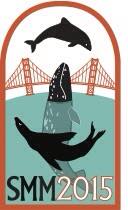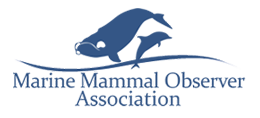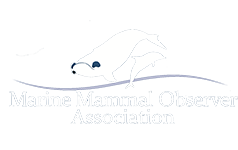 In December 2015 the 21st Biennial Conference on the Biology of Marine Mammals was held in San Francisco, California. The conference was one of the largest in its 40-year history and saw over 2500 attendees from 80 countries and over 1000 presentations including talks, speed talks and over 500 posters.
In December 2015 the 21st Biennial Conference on the Biology of Marine Mammals was held in San Francisco, California. The conference was one of the largest in its 40-year history and saw over 2500 attendees from 80 countries and over 1000 presentations including talks, speed talks and over 500 posters.
Prior to the official start of the Conference two days of workshops were held including the MMOAs workshop on 'Incorporating new mitigation technologies into guidelines for seismic surveys and other underwater acoustic activities and producing performance standards', co-hosted once again with Dr. Andrew Wright from New Zealand’s Department of Conservation (with the support of Mel Cosentino from Wild Earth Foundation). This workshop followed on from the very successful workshop the MMOA and New Zealand’s DOC hosted at the 29th European Cetacean Society Conference in Malta in March 2015.
The workshop in San Francisco was attended by over 50 people representing government, industry, environmental consultants, non-profit and academia. Professional MMOs and PAM Operators were also present, including at least 7 members of the MMOA.
Sessions were divided into two key areas of interest: Performance standards for source techniques, and Performance standards for detection techniques. After a brief introduction to the day’s events and summary of the MMOA by Frances Robertson, Andrew Wright from New Zealand’s DOC started things off with a summary of the Malta workshop and followed with an update on the progress of the ongoing review of New Zealand’s seismic guidelines.
Mirjam Müller from the German Environment Agency and Jakob Tougaard from Aarhus University in Denmark led the discussion on performance standards for source techniques with presentations on the approaches to meeting performance targets in Germany, and in Denmark and Greenland. Pile driving is the key concern in German and Danish waters but in Greenland the interest in developing the region's oil and gas resources has led to concerns surrounding seismic survey operations. This session saw a valuable disscussion on the various approaches taken by different countries around the world, yet also touched on questions surrounding alternative source technologies and appropriate target levels. In general participants agreed that the threshold-at distance-based approach (as adopted by Germany and Denmark) were the most appropriate approach to follow at present.
The second session of the workshop focused on performance standards for detection techniques. This session saw 5 presentations ranging from the effects of animal behaviour on observer detectability (Frances Robertson, Marine Mammal Research Unit, University of British Columbia & MMOA), and the development of adaptive mitigation approaches in the Canadian Arctic in areas with bowhead whale feeding aggregations (Lois Harwood, Canadian Department of Fisheries and Oceans) to mitigation methods and how the effectiveness of methods can be assessed.
Stephanie Watwood from the US Navy described a study underway to evaluate the effectiveness of MMOs; given that the use of MMOs is standard by both the Navy and industry this is one of the first attempts to look at observer effectiveness. Daniel Zitterbard with Woods Hole Ocenographic Institute presented his latest work with thermal imaging and raised key questions surrounding the need to have good estimates of detection ability if the effectiveness of mitigation methods are to be assessed. Jim Theriault of Ocean Environmental Consulting provided a summary of the approach used in the JIP funded study to assess low-visibility real-time monitoring techniques.
The workshop was wrapped up be an animated discussion on the issues surrounding detection methods and how performance standards might be achieved. However, participants reached consensus on three key points.
- Detection Technologies (including MMOs & PAM)
It was recommended that guidelines should require a 3-stage demonstration of effectiveness including 1) estimates of detection ability, 2) estimates of performance (i.e. how well can methods detect animals) and 3) effectiveness.
- Source Technologies
As no better alternatives were proposed participants agreed that the threshold-at-distance-based solution is the best but that more goal-orientated approaches to management were recommended.
- Implementation
All agreed that the German approach to incremental implementation was the most appropriate. It allows regulators to make informed science-based decisions while it allows industry the time to adapt to management requirements.
The MMOA considers the workshop a great success, not only as an opportunity to raise the profile of the MMOA to an international audience but particularly to a predominantly North American audience. The points covered during the discussion will also provide valuable input to New Zealand’s DOC in their ongoing review of their seismic guidelines. These workshops provide a unique opportunity for attendees to provide valuable input to these activities. They also provide opportunities for diverse groups of experts, including policy makers and regulators, industry representatives and in particular those individuals working to directly implement monitoring and mitigation procedures to meet and converse.
The workshop organizers plan to again write up the workshop and make this publically available and the MMOA will circulate this report once it is published.
For more news on goings on and happenings of the 21st Biennial Conference, includeing interesting news stories check the following links: https://www.marinemammalscience.org/conference/media/smm-2015-conference-in-the-news/

